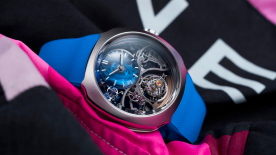Older than you think
When did the first ever chronograph appear? The most commonly accepted answer is 1821, when Nicolas Rieussec developed an instrument capable of measuring brief time intervals without displaying the time. In 1822, he received a five-year patent for the use of his ‘Seconds Chronograph’.
In 2008, Montblanc adopted this discovery, creating a chronograph named after Nicolas Rieussec and directly drawing visual inspiration from his device equipped with two rotating discs for elapsed-time counters. The MB R100 movement is still produced with many different complications added to it since (date, second time zone, etc.).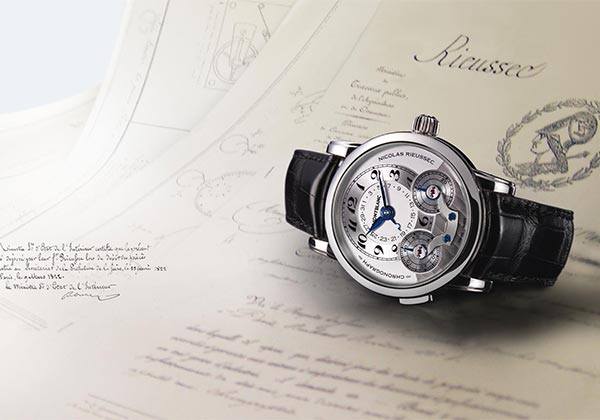
But in 2013, independent firm Louis Moinet grabbed the limelight. Jean-Marie Schaller, its founder and CEO, had just laid his hands on a timepiece that led to a major rewrite of watchmaking history textbooks everywhere: the Compteur de Tierces. This priceless piece was rediscovered at an auction in 2012. The first surprise was that it bore a very precise date stamp. Work on it had begun in 1815, and was completed in 1816. The second surprise was that the Compteur de Tierces was still fully functional. And the third surprise was that the instrument invented by Louis Moinet was precise to within one-sixtieth of a second, operating at 216,000 vibrations per hour. Not only had Louis Moinet just become the undisputed inventor of the chronograph; he also turned out to be the founding father of high frequency.
The Agenhor revolution
Watchmaker Jean-Marc Wiederrecht has decidedly set views on contemporary chronographs: he deems their counters to be small, poorly located and illegible, with the result that the complication is not given the attention it deserves. Between 2007 and 2016, he embarked on finding his own solution to the problem, perhaps the ultimate solution: the AgenGraphe.
He created a movement with a hole in it: “a doughnut,” as he laughingly refers to it today. The entire traditional timekeeping section of the calibre is positioned around the circumference, leaving a circular empty space in the middle – where Wiederrecht’s Agenhor company had the fantastic idea of placing a chronograph module. This prime location resulted in a central display chronograph; an idea that echoed Cartier's Rotonde Central Chronograph in 2009. The time itself becomes of secondary importance, pushed to the periphery of the dial; the chronograph, with its three central hours, minutes, and seconds hands, takes pride of place.
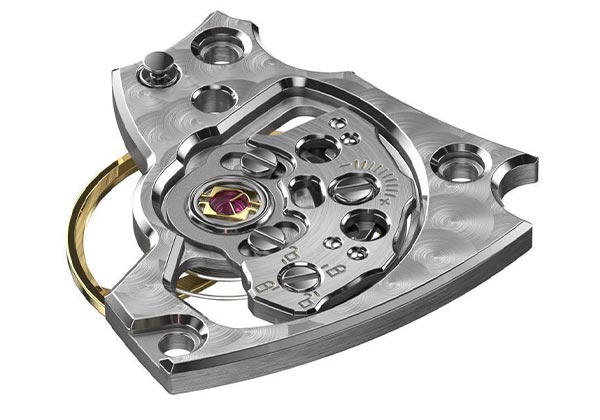
To ensure this mechanical wonder (featuring some 500 components and 67 jewels) can be shown off to its best advantage, the oscillating weight is located beneath the dial. As a result, the AgenGraphe sports all the advantages of an automatic movement, with an over 50-hour power reserve, as well as those of a mechanical movement, with the movement fully visible through the sapphire caseback. And to cap it all, each passing minute and hour is marked by a clear, precise jump.
TAG Heuer: approaching lightspeed
TAG Heuer is one of the brands that did by far the most work on the chronograph, as seen mainly between 2011 and 2016. The man behind these innovations was Guy Sémon, who joined TAG Heuer in 2008 as Vice President of Science and Engineering, as well as Head of Research and Development, after working with them as an external consultant for the Monaco V4 project.
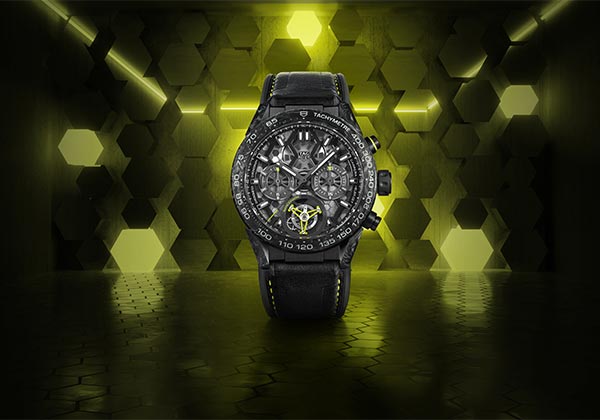
Redesigning the chronograph for the 2000s
‘High frequency’ and dividing the seconds display into base 10 were to become common threads in his work. In 2009, he laid the foundations of TAG Heuer’s in-house dual chain chronograph architecture. He got rid of the clutch and fitted his watches with two full going trains, a system which TAG Heuer had already explored since 2005 in the Carrera Calibre 360 modular chronographs. The first chain counts the hours, minutes, and seconds, running at a frequency of 4 Hz. The second is dedicated to the chronograph, with a frequency of 50 Hz. And thus was the 2011 Mikrograph born: a single watch with two independent movements. The chronograph movement features a large seconds hand that completes one dial rotation in one second, giving a direct reading in hundredths of a second. Approximately 500 of them were made.
Chronograph to the power of 1000
The Mikrotimer Flying 1000 arrived later that year, taking TAG Heuer from high frequency (50 Hz) to very high frequency: 500 Hz, with the timepiece measuring thousandths of a second. To achieve this, TAG Heuer had to design a balance wheel ‘launcher’. A score or so of Mikrotimer Flying 1000s were made
From pallet-lever to beam
The very next year, Guy Sémon pushed the envelope still further, going from 500 Hz to 1000 Hz with the Mikrogirder. Once again, the timepiece used the dual chain principle, but now, with a frequency of 1000 Hz, the chronograph could measure intervals of just five ten-thousandths of a second. To achieve this, Guy Sémon developed a vibrating beam system, for which the piece won the highest Grand Prix d’Horlogerie de Genève (GPHG) distinction, the “Aiguille d’Or”, in 2012.
The first high-frequency tourbillon for a chronograph
In 2012, Guy Sémon was working on the balance wheel, too. His Mikrotourbillon S was also based on a dual chain, but in this case one fitted with two semi-flying tourbillons. The first, dedicated to time, beats at 4 Hz, while the second (for the chronograph) has a frequency of 50 Hz, and rotates at a dizzying 12 revolutions per minute. Just three Mikrotourbillon Ss were produced.
Mechanical – and magnetic – attraction
In 2013, TAG Heuer continued work on the escapement, creating the magnetic balance wheel, and thus the Mikropendulum (first presented as a concept in 2010). Once again, the timepiece is based on a dual chain. The time component features a traditional, 4 Hz design, while the chronograph has a frequency of 50 Hz and includes a balance wheel fitted with a rotor and a stator.
Piaget and Bvlgari: the extra-slim chronograph advocates
Chronographs are seen as sports-related, and thus tend to be sturdy and thick – massive, even. Extra-slim watches, on the other hand, are evocative of the refinement to be found in Parisian salons; the preserve of collectors whose main leisure activity is caring for their timepieces. They are worlds apart: outdoor versus indoor; modernity versus tradition; accuracy versus elegance.
In 2015, Piaget set out to reconcile the two with its Altiplano Chronograph. The 41mm case of this manual-winding watch is just 8.24mm thick. The movement itself is a mere 4.65mm thick. The timepiece won the GPHG Chronograph Watch Prize.
Four years later, in 2019, history repeated itself: the same GPHG prize went to a similar watch, Bulgari’s Octo Finissimo Chronograph GMT. The collection has also become a regular record-breaker, with the Octo Finissimo clocking up six world records for slimness in as many years - including the 2020 Octo Finissimo Tourbillon Chronograph Skeleton Automatic
Vintage chronographs: the 2000-2020 icon
In 2014, Breitling’s historic Chronomat celebrated its 30th anniversary. With it, the brand joined the industry-wide shift towards vintage – the art of producing new editions of historic models. All the brands targeting the general public succumbed to the trend, replicating watches from the 1950s and 60s. That spoke to collectors for whom such pieces were witnesses to their own past – or, for younger people who saw in them a fantasy version of the past, part of the golden age of watchmaking design enjoyed by their parents.
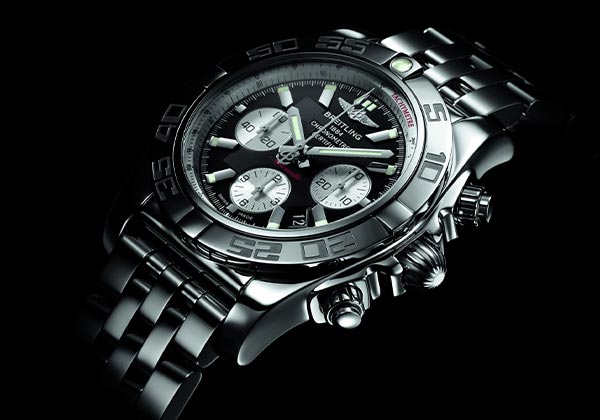
Examples include Jaeger-LeCoultre with a new edition of its 1968 Polaris, Vacheron Constantin with its FiftySix, and Tudor with its Heritage Chronos. A few brands, notably including Alpina, embarked on producing vintage sports chronographs. 2019 was noteworthy in this respect, with three golden jubilees celebrating Zenith’s first El Primero, the first Monaco from TAG Heuer (or just ‘Heuer’, as it was back then), and Omega’s ‘Moonwatch’ – the Speedmaster present at the moon landing on 21 July 1969.

*On the occasion of GMT Magazine and WorldTempus' 20th anniversary, we have embarked on the ambitious project of summarising the last 20 years in watchmaking in The Millennium Watch Book, a big, beautifully laid out coffee table book. This article is an extract. The Millennium Watch Book is available on www.the-watch-book.com, in French and English, with a 10% discount if you use the following code: WT2021.










